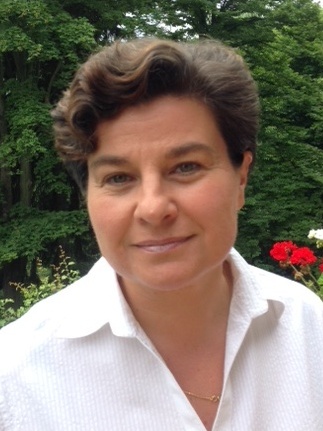
"Multi-disciplinarity is intrinsic to Public Health"
An interview with Elena Gelormino, ASL TO5/Università di Torino
Elena Gelormino is a public health physician at ASL TO5 and has been collaborating for many years with the University of Turin and SiTI on studies about health in all policies and health inequalities. In SOPHIE, she co-leads the work package on and built environment and housing.
You combine your work as public health physician at a Local Health Authority with research on social determinants with the University of Turin. How difficult it is?
Sometimes I suffer this duality: it means to be permanently in shortage of time; research is quite an optional activity if compared with the running activities for more than 300,000 residents. Consider also that research has been traditionally confined in the "ivory tower", far from daily problems of people and colleagues: it is now difficult to highlight the role and the usefulness of a policy-oriented research. The routine activities are sometimes crystallized in a strong inertia that impedes cultural innovation of health professionals and frustrates curiosity. The economic crisis has even worsened this situation, reducing resources for research and development, incrementing a vicious circle that make Italian Local Health Authorities even less capable of participating at any European form of funding: when study and research become a luxury, the development stops. EU research funding is struggling to go beyond the dichotomy research/daily activities: I think this is the right way to alleviate this problem. Personally, I am taking a big advantage from the knowledge we are dealing with in SOPHIE. According with the new Italian law about Strategic Environmental Assessment, the Local Health Authority is involved in some phases of the urban planning: these are the best place where to transfer knowledge from the "ivory tower" to the local policy arena, and I am doing it!
You are working in a multidisciplinary group, especially with architects. What are the main challenges and opportunities of this collaboration?
Even if in my country Public Health is seen as the Cinderella of all medical specialties (and prevention services receive the smallest budget from the national fund for health), it covers a huge field of actions, decisions and knowledge and multi-disciplinarity is intrinsic to it: we have to deal with very different languages and epistemological approaches. The collaboration with the architects of SITI foundation started five or six years ago, in the setting of a Health in All Policies project funded by the Italian Ministry of Health and it has been a fruitful experience. We had to learn from each other and find a balance between their deductive and more technical approach and our inductive and more empirical one. What is in common? The hope of offering some help to people to improve the quality of life in towns.
In SOPHIE you have been faced with using new methods. Which advantages and difficulties would you highlight?
In SOPHIE we are dealing with a great challenge: to improve and reinforce the traditional social and health research on administrative data, linked together in the Turin Longitudinal Study, and to learn how to deal with realist methods. We are learning how to review the literature conjugating the methodological rigour of hard data analysis with the "nearer to people" approach of realist methodology. I hope this experience will enable us to design research paying attention to mechanisms (social, political and economical ones) that stay beneath the link "urban policies-health inequalities" whose effects we usually measure quantitatively, and to move toward a research involving, at local level, social and political stakeholders from scratch.
You have recently published a review about housing policies and social mix. Could you formulate some policy recommendations based on your results?
Social mix policies rely on a set of beliefs about the benefit of mixed communities (mainly reduction of conflicts among ethnic, religious or simply economically different groups) with little evidence to support these assumptions. A contrast emerges from this approach and empirical evidence: if social mix succeeds, we observe a reduction of social conflicts but it could determine a decrease in protective effects of intra-group relationships, which have a positive effect on physical and mental health especially in low socioeconomic status groups. In our review, we conclude that involuntary concentrations deriving from poverty and lack of choice should be regarded as a serious problem and policy makers should increase the opportunity in the housing market for less affluent people. A general level of welfare strongly increase the equality of opportunities in the housing market; whether people live together on the basis of some affinities or not should be considered a free choice of all European residents. Finally, social mixing phenomena go beyond the political or administrative power and are certainly improved by adequate educational and employment opportunities.
How has your experience of being involved in a European project been like?Simply great! I have learned a lot from colleagues of other countries, from a scientific and from a human point of view. I wish other sectors of the Italian government institutions could have similar opportunities at EU level: it could strengthen my country and make my fellow citizen healthier!




